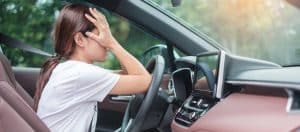The UK is on the verge of a major digital transformation in how driving licences are issued, stored, and used. In a move aligned with the broader government strategy for digital public services, digital driving licences will begin rolling out later in 2025 as part of the GOV.UK Wallet initiative.
The change is expected to modernise the way Britons carry and present their driving credentials, making them more convenient, secure, and aligned with the digital expectations of today’s society.
What Is a Digital Driving Licence?
A digital driving licence is an official, government-issued version of your physical driving licence that can be stored on your smartphone or other digital devices. Rather than relying solely on the traditional plastic card, the digital version allows drivers to securely access their licence information via an app in this case, the upcoming
GOV.UK Wallet.
This digital wallet will hold multiple forms of government-issued ID, starting with the provisional driving licence, and expanding over time to include other documents such as passports and national insurance cards.
Timeline and Rollout
According to the Driver and Vehicle Licensing Agency (DVLA) and the Department for Transport:
- A pilot scheme for the digital provisional driving licence will begin in late 2025.
- Full rollout to all drivers, including those with full licences, is expected after the pilot’s success and feedback review.
- This digital initiative is part of the broader Transforming for a Digital Future strategy launched by the UK government.
The GOV.UK Wallet app is currently in development and will serve as the central platform for accessing digital IDs.
Why Is the UK Introducing Digital Driving Licences?
There are several drivers behind the move:
- Convenience: A digital licence means you no longer need to carry your physical card everywhere. It’s ideal for everyday identification purposes.
- Security: Advanced encryption and biometric security (like Face ID or fingerprint) provide better protection against loss, theft, or misuse.
- Efficiency: Updating and renewing your driving licence will become more streamlined, reducing paperwork and wait times.
- Environmental Impact: It reduces the need for plastic cards and postage, supporting the UK’s sustainability goals.
Features Expected in the Digital Licence System
While full technical details are still emerging, here’s what we know or expect:
- QR Code Verification: For fast, secure ID confirmation by police or car hire companies.
- Real-Time Updates: Changes like address updates can be reflected immediately.
- Secure Access: Via biometric login, such as fingerprint or face recognition.
- Multi-ID Storage: Eventually, GOV.UK Wallet will allow storage of various digital IDs in one app.
- Offline Availability: The system is likely to include a method for accessing the licence without internet access, though this hasn’t been confirmed.
How Will This Affect Learner Drivers?
Learners will be the first group to receive the digital version of the licence. Provisional driving licences will be issued digitally during the pilot, giving new drivers a taste of what’s to come.
It’s expected that learner drivers will be able to apply for and receive their provisional licence entirely online, making the process faster and more efficient.
What Happens to the Physical Licence?
The DVLA has no plans to phase out the physical driving licence entirely at this stage. The digital version is designed to complement the existing physical card, not replace it, at least not in the immediate future.
This dual-system approach ensures inclusivity for individuals who may not have access to smartphones or prefer physical identification.
Privacy and Security Concerns
A key concern for many is how securely personal data will be stored. The government has emphasised:
- Data will be stored and encrypted on UK servers.
- Biometric logins and app-level protections will prevent unauthorised access.
- Users will have control over when and with whom their data is shared.
Transparency reports and third-party audits are also likely to be part of the system’s long-term governance.
Impact on Driving Tests, Car Rentals, and Law Enforcement
The digital driving licence is expected to simplify a number of processes:
- Driving Tests: Digital IDs can streamline booking and ID verification at test centres.
- Car Rentals: QR codes or digital licence sharing could speed up rental processes.
- Police Checks: Officers may be able to verify identity instantly using digital authentication, potentially reducing delays in traffic stops.
Frequently Asked Questions (FAQs)
Do I still need to carry my physical driving licence?
Yes, at least for now. The digital licence will supplement, not replace, your physical card during the initial rollout.
Is the digital licence valid abroad?
No, not initially. Physical licences will still be required when driving or renting vehicles abroad. International recognition of digital licences may take time.
What if I lose my phone?
As long as your phone is protected and you’re using a secure app like GOV.UK Wallet, your licence will remain secure. You can re-download the app and access your licence on a new device.
Will I be forced to go digital?
No. The physical licence will remain valid. Going digital is optional and voluntary for now.
Will older drivers or those without smartphones be supported?
Yes. The government has assured that physical licences will remain for those who prefer them or don’t have access to smart technology.
Can I use my digital licence as ID for other purposes (e.g., age verification)?
Potentially, yes. The GOV.UK Wallet is being designed for broader identity use, such as proving your age at a venue or verifying details with financial institutions.
Conclusion
The upcoming digital driving licence is a significant step forward in the UK’s push toward a more efficient, secure, and digital-first society. While it’s still in the pilot phase, the long-term vision promises more streamlined identity management for drivers and wider integration with other government services.
As the rollout progresses, keeping your physical licence handy remains important, but the future of driving ID in the UK is undoubtedly digital.

